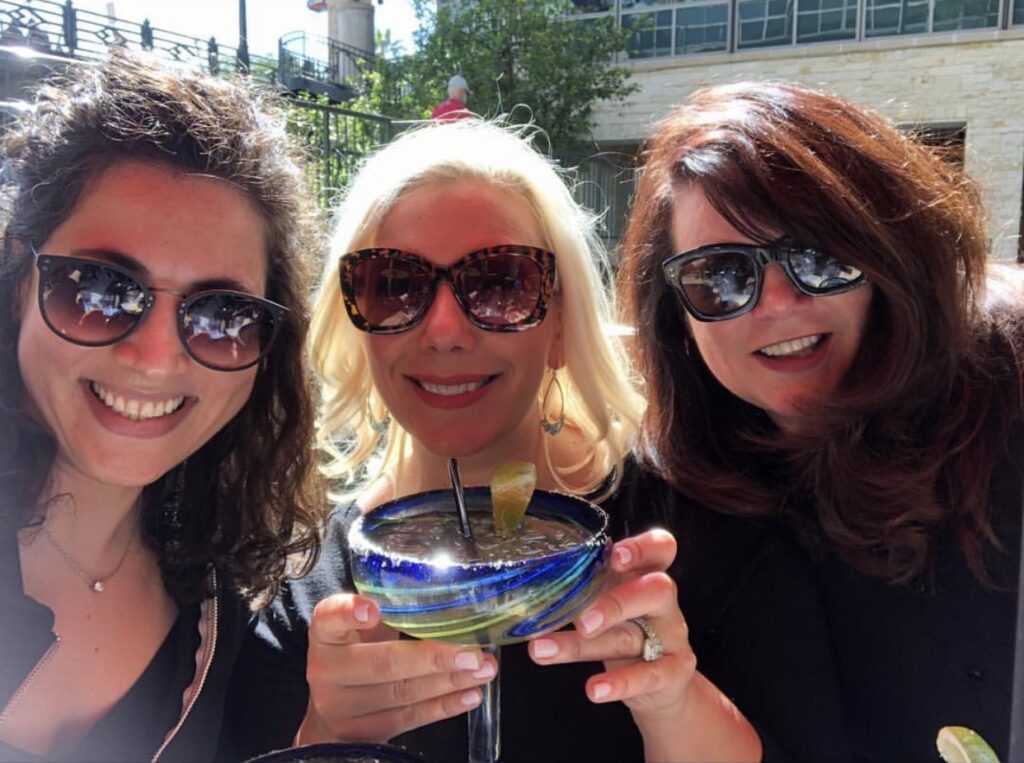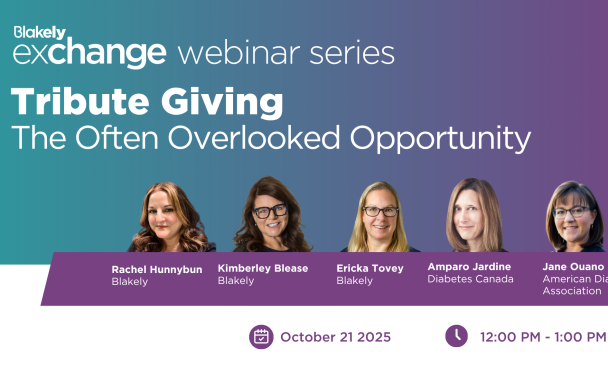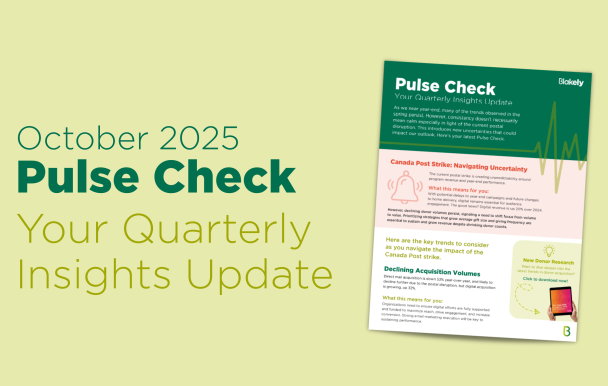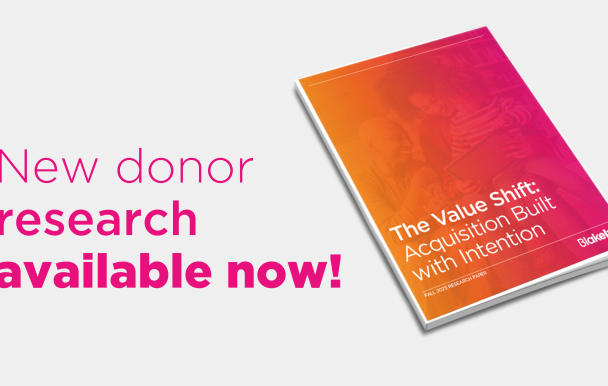TOP SIX LEARNINGS FROM #AFPICON 2019
We are back from #AFPICON in sunny San Antonio, Texas and what an amazing conference it was. So amazing that we need to share a few key takeaways from some of the awesome sessions that we —Amy, Kimberley, and Nicole — were lucky enough to attend.
TAKEAWAY #1 — NEW IDEAS AND INNOVATION AREN’T ALWAYS FOUND IN BEST PRACTICES
The first session was from our very own writer Nicole Kallmeyer’s session with the remarkable Brock Warner, Better by Design: Practical Advice for Applying Donor-Centric Design Thinking. Brock and Nicole explained how design thinking isn’t about simply being creative, it’s about generating insights to create something that improves human experience (a.k.a. donor experience).
At Blakely we practice this every single day. We don’t make videos sad just for the sake of it, nor do we make an OE larger just to look extra nice. If you aren’t listening to what the insights are telling you, you are doing yourself (and your program) a disservice.
Nicole and Brock shared the four steps that are involved in the design thinking process: observation, ideation, prototyping, and testing. If you’re interested, you can find the handout with these steps broken out at the bottom of this post. Even trying one or two of the steps in the design thinking process may help you discover new insights that could advance your fundraising approach and reach donors more effectively. You’d be surprised what you can accomplish by stepping out of the same best practices we all know so well and truly tapping into what the insights are telling you.
TAKEAWAY #2 – BEHAVIORAL SCIENCE IS A SERIOUSLY POWERFUL TOOL
The second session was The New Science of Fundraising. Bernard Ross focused on how to use neuroscience and behavioural economics to improve fundraising. showed how, through priming the donor’s brain, you can increase the number of gifts and drive a higher average gift.
It was also incredible to see Thomas Kurmann, Director of Development at MSF US share how they took these behavioural science learnings and applied them to online fundraising tests. Through testing, they found conversion is more dependent on the donor’s journey and what brought them to the donation page, rather than the donation page itself, in terms of affecting higher conversion rates and higher gifts.
TAKEAWAY #3 – GET ‘EM ENGAGED!
Who doesn’t want to get a donor engaged with your cause in meaningful ways prior to making a long term ask? In Rachel Muir and Rachel Clemen’s session, Digital Envy: Showcasing the Best of Digital Fundraising, we saw how Habitat for Humanity of Greater San Francisco put together a “7 Weeks of Action Campaign” where each week all you had to do was take an action: maybe a social media share, or engaging in a local advocacy, or as simple as connecting with someone in your neighbourhood through a kind gesture. By the end of the seven weeks, a summary email with a donation ask was sent with an invitation to share what they loved more about their neighbourhood. They saw a 50% increase in dollars raised and 38% increase in new donors! This session was full of unique thinking and inspiring content examples.
TAKEAWAY #4 – EXPERIENCE REALLY DOES MATTER
Penelope Burk’s session, What donors Are Saying About Bequests Motivation and Potential, totally reinforced our thinking when it comes to legacy/planned giving.
Donors start to make decisions about their legacy based on life experience and often at a younger age than we realize. So what does this tell us?
All of the experiences with your organization are cumulative — they engage and work together to inspire the donor on the journey.
This means what you do in your annual program, events, or stewardship budgets, all has an impact on the success of your legacy/planned giving program. The experience a donor has throughout the entire journey with your cause matters.
We’ve also been having lots of discussions about imagery in marketing materials and guess what?! Pictures of hands are not inspiring! Nor are wealthy donors looking into the camera. People want to see images that reflect your work and the incredible potential for change that their gift could impact. In other words — they want to see real outcomes, as do all donors!
TAKEAWAY #5 – GRIEF WILL GUIDE PHILANTHROPIC DECISIONS
We have been doing a lot of work on Tribute and In-Memory Giving in the last year, and in order to shift the journey we have these donors on, we need to support them as they utilize philanthropy on their path to healing.
Nancy Horvath, Alexis Gaiptman, and Denise Fernandes’ session, Gateway to Healing: Exploring How Donors Deal with Grief Through Philanthropy, dealt with this issue head-on. The grief cycle is something we talk about a lot and this session opened up a conversation about grief that was long overdue. All of us — fundraisers, partners, and donors — are dealing with varying degrees of grief that affect us in various ways. Denise, Nancy, and Alexis shared their personal stories and their own experiences of working with donors who are in the midst of the grief cycle.
Everyone deals with grief differently — being sensitive and allowing people to use philanthropy in a way that is meaningful to them is all we can do.
TAKEAWAY #6 – LOYALTY IS PRICELESS
Lastly, Adrian Sargeant’s session, Building Donor Loyalty: Lessons from Research, was fascinating. Adrian spoke in depth about what drives loyalty, how loyalty can be measured, and the critical role of satisfaction, commitment, and trust.
Much of the research Adrian touched on is fundamental and a great reminder that Lifetime Value is Queen, and it can deliver a lot of punch including helping us choose media, set levels of investments in acquisition and reactivation, and guide overall marketing budgets.
The research he shared also underpins what we truly believe — that a great donor experience enhances feelings of satisfaction, commitment, trust, and ultimately, inspires donors to do more.
Thanks for reading! Wherever Blakely goes next for fundraising learning, you can be sure we’ll share our best insights with you!
– Nicole, Amy and Kimberley










